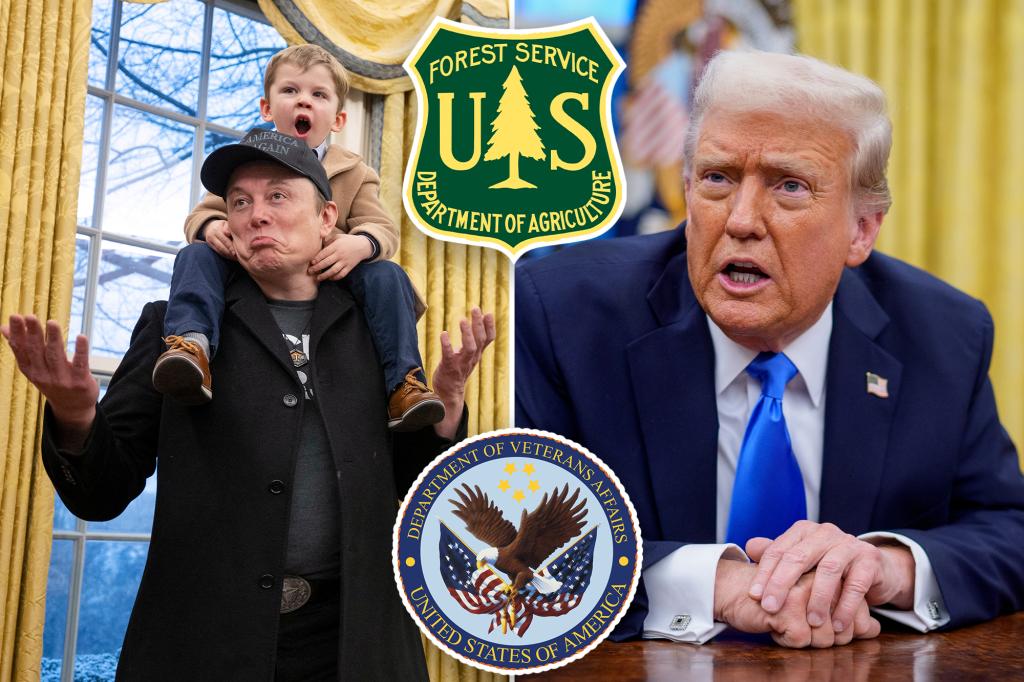World
Thousands fired in US government as Trump, Musk purge federal workers

A New Era of Government Downsizing: Mass Firings Across US Agencies
The US government has embarked on an unprecedented wave of staff cuts, with thousands of employees across multiple federal agencies being let go in a matter of days. According to union sources and employees with knowledge of the developments, President Donald Trump and Elon Musk, the CEO of Tesla, are spearheading this purge of the federal bureaucracy. The firings are part of a broader effort to overhaul the government, which Trump has criticized as being bloated and inefficient. The Department of Veterans Affairs, the US Forest Service, and several other agencies have already begun terminating employees, particularly those who are still within their probationary periods. This move has sparked widespread concern among workers and raised questions about the legality and implications of such a drastic approach to government reform.
The Scope of the Firings: Agencies and Employees Affected
The firings have been widespread, affecting numerous federal agencies, including the Department of Education, the Small Business Administration, the Consumer Financial Protection Bureau, and the General Services Administration. At the Department of Veterans Affairs, over 1,000 probationary employees were let go, while the US Forest Service is set to terminate more than 3,000 workers. Termination emails have been sent to employees across the government, primarily targeting those who were hired within the past two years and are still on probation. These employees have fewer legal protections, making it easier for the administration to carry out the firings without facing significant legal challenges. In some cases, however, the firings have extended beyond probationary employees, with term employees and full-time workers also receiving termination notices.
The Overhaul of the Federal Government: Trump and Musk’s Vision
President Trump has long argued that the federal government is too large and that excessive spending and inefficiency have led to a $36 trillion national debt and a $1.8 trillion deficit last year. He has defended the firings as a necessary step to address these issues, claiming that the government is plagued by waste and fraud. Elon Musk, who has been tasked with leading this effort, has sent his team from the Department of Government Efficiency (DOGE) into at least 16 federal agencies, where they have gained access to sensitive personnel and financial information. Musk’s aides have even reached the Internal Revenue Service (IRS), a move that has raised eyebrows given the agency’s historical independence and the Republican Party’s long-standing criticisms of it.
Legal Challenges and Employee Backlash
As the firings continue, legal challenges are beginning to emerge. A group of 14 states has filed a federal lawsuit alleging that Trump appointed Musk illegally, granting him unchecked authority without congressional approval. The lawsuit claims that Musk’s role in the government overhaul violates constitutional and statutory requirements. Meanwhile, employee backlash has been growing, with many workers expressing frustration and anxiety about their sudden dismissals. One worker at the General Services Administration, who was just one month shy of completing their probationary period and had received excellent performance reviews, described the situation as a “nightmare,” citing concerns about paying their mortgage and supporting their family. The terminations have also raised concerns about due process, as many employees feel they are being let go without adequate justification or legal recourse.
The Financial and Human Cost of the Firings
The firings are expected to save the government millions of dollars, with the Department of Veterans Affairs alone estimating that it will save $98 million annually by terminating over 1,000 employees. These savings will be redirected toward healthcare, benefits, and services for veterans. However, the human cost of these cuts has been significant, with thousands of workers suddenly finding themselves without jobs. Some 75,000 federal employees have signed up for buyouts, equivalent to 3% of the civilian workforce, as part of the administration’s effort to shrink the government. The buyouts are part of a broader strategy to reduce the federal workforce, which Trump and Musk believe is necessary to improve efficiency and reduce waste. However, critics argue that the firings are being carried out in a blunt and arbitrary manner, without sufficient consideration for the impact on employees or the potential consequences for government operations.
The Implications of the Trump-Musk Overhaul
The Trump-Musk overhaul of the federal government represents a significant shift in how the government operates, with far-reaching implications for both employees and the public. While the administration argues that these cuts are necessary to address the nation’s financial challenges, critics warn that the approach is overly aggressive and risks undermining the government’s ability to provide essential services. The involvement of Elon Musk, a private-sector executive, in such a pivotal role has also raised questions about the blurring of lines between government and corporate interests. As the firings continue and legal challenges mount, the future of the federal workforce remains uncertain. The outcome of these efforts will likely shape the direction of government reform for years to come, with significant consequences for the millions of Americans who rely on federal services and the workers who provide them.











